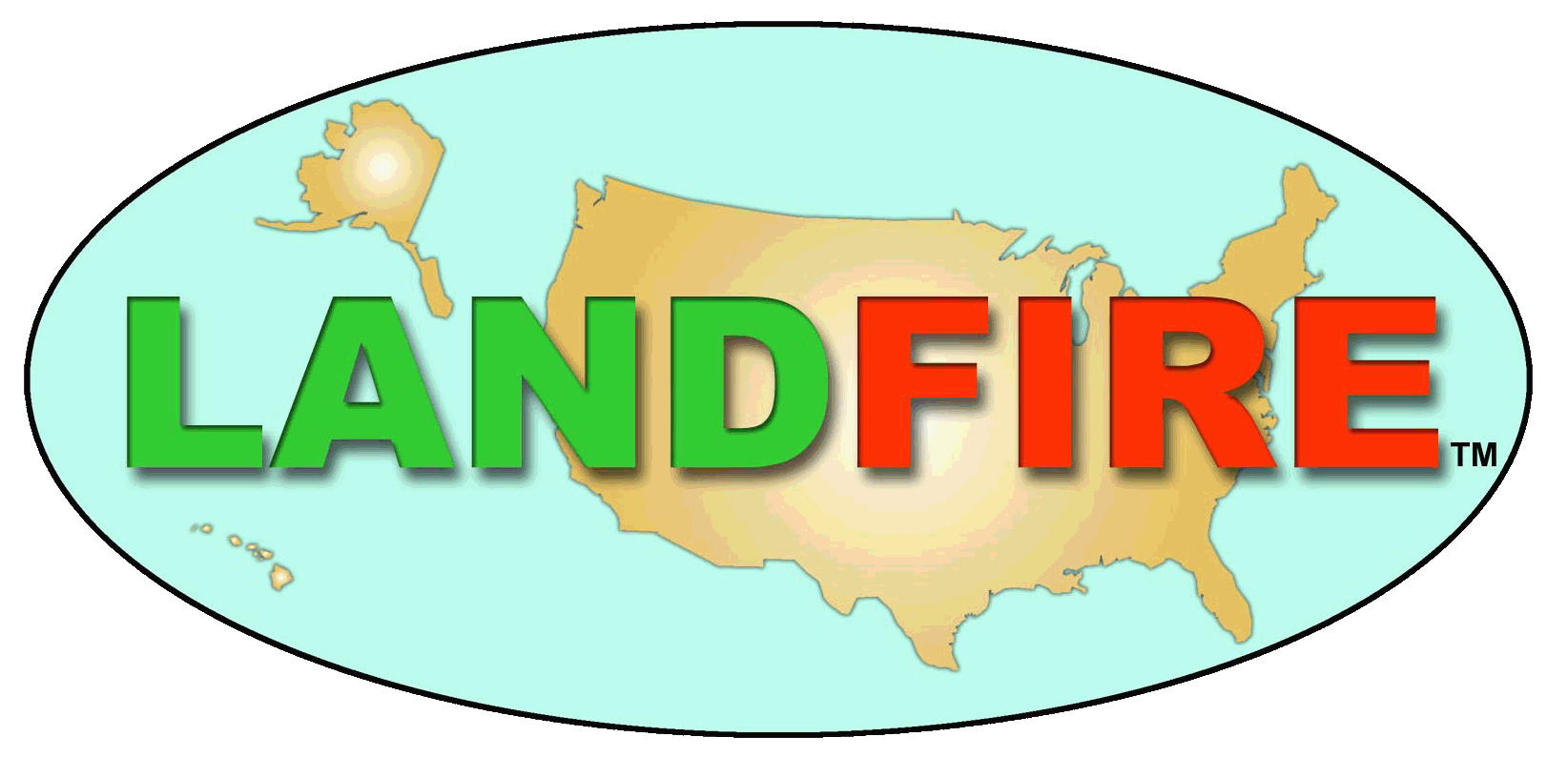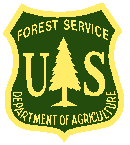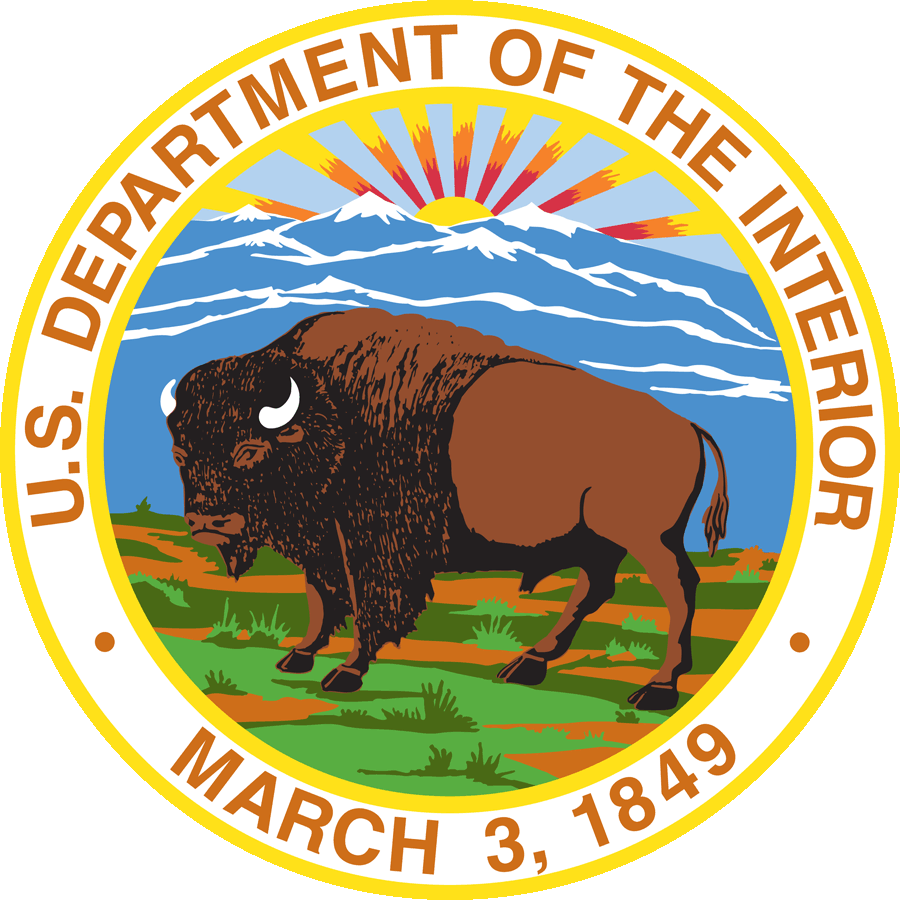




 Latest News
Latest NewsUpon downloading and using LANDFIRE (LF) vegetation dynamics models, questions may arise. The following information is intended to assist model users. Please check this Model Notifications page regularly for important updates.
Please contact the LF helpdesk with questions.
Vegetation models 11550 & 11551:
After further model review of BpS 11550, North American Warm Desert Riparian Systems, in mapping zone 25, it was noticed that the middle and lower Rio Grande River riparian and bottomland areas are mapped as BpS 11550, which is modeled as sacaton grassland (either Sporobolus airoides saline/alkaline soils or S. wrightii fine textured soils). Further review suggests that it should be mapped as a mixture of BpS 11550 and BpS 11551, the latter of which includes cottonwood-dominated forests. Areas with coarse alluvium substrates, such as sandy to gravelly, would likely succeed to tree-dominated vegetation, while areas with fine textured and/or saline/alkaline substrates would likely be maintained as grassland or possibly a shrubland such as saltbush scrub. For wooded areas along the middle and upper Rio Grande River, Rio Grande cottonwood (Populus deltiodes var. wislizenii) rather than Fremont cottonwood (Populus fremontii) would dominate or codominate the tree canopy with or without Gooding willow (Salix goodingii). Model 11551 is currently restricted to SE Arizona, which is dominated by Fremont cottonwood (Populus fremontii) rather than Rio Grande cottonwood (Populus deltiodes var. wislizenii) in New Mexico. This model would also need to be broadened geographically to include New Mexico portions of mapping zone 25 and floristically to include Rio Grande cottonwood as a dominant tree species.
Vegetation model 10750:
The 10750 Chihuahuan Mixed Salt Desert Scrub, which occurs in the lower portions of Rio Grande River in mapping zone 25, overlaps conceptually with 11550 and 11551 the North American Warm Desert Riparian Systems. After further model review of BpS model 10750 Chihuahuan Mixed Salt Desert Scrub in mapping zone 25, it was found that it is very similar to the 11550 and 11551 North American Warm Desert Riparian Systems models, especially where substrates are more saline or alkaline. This model is likely an uncharacteristic form of typical four-wing saltbush (Atriplex canescens) desert shrublands, as Atriplex canescens is not listed as a component of species in any stage. More model review is needed to clarify this BpS model.
Vegetation model 15040:
The BpS model 15040 Chihuahuan-Sonoran Desert Bottomland and Swale Grassland is similar floristically to riparian models and may be mis-mapped in near riparian zones. After further model review, it was noticed that the BpS model 15040 Chihuahuan-Sonoran Desert Bottomland and Swale Grassland is very similar to Class A in 11550 North American Warm Desert Riparian Systems where 15040 are mapped along rivers and floodplains (riparian areas). 15040 should be restricted to internally drained basins and areas adjacent to intermittently flooded drainages areas. Stands of 15040 mapped near semi-permanently flooded riparian zones should be reviewed to ensure that they are not actually a riparian system.
Incorrect Relative Age Setting in VDDT: The vegetation models for some eastern zones had an incorrect setting for relative age in the VDDT database.
Background & Advice:
Relative age was not set correctly in the following eastern zones when they were first made available for download from www.landfire.gov: 25, 26, 27, 29, 30, 33, 34, 37, 44, 45, 55, 56, 58, and 98. Relative age, according to LANDFIRE (LF) modeling rules, should be set to the inverse of the end age of the class (for example, if the class end age is 10 and relative age is used, it should be set to -10). In the aforementioned zones, relative age was set to the class end age rather than the inverse of the class end age. In some cases, an incorrect relative age setting could change the model results. The LF team has corrected the relative age issue and redelivered corrected files. For zone 25 a new version of the model description document was released to correct inaccurate descriptive information related to this issue. For all other zones, only the VDDT database was changed. The error in the relative age setting did not affect any of the mapped products. Customers are advised to delete any local version 1 databases (that is, those that have "v1" in the file name) they may have downloaded and replace them with the version 2 databases (those that have "v2" in the file name) currently available from the LF website.
Error in VDDT model for biophysical setting 1080 in mapping zone 33: The "time since disturbance" function in the VDDT model for BpS 1080 was not attributed appropriately.
Background & Advice:
As a result of final quality control procedures for LANDFIRE (LF) National, it was noticed that the "time since disturbance" function in the VDDT model for BpS 1080 was not attributed appropriately. According to LF rules, time since disturbance should be set to less than or equal to one less than the class duration. This ensures that the time since disturbance function occurs before a deterministic transition shifts pixels to another class. In the case of BpS 1080 in mapping zone 33, time since disturbance in Class C was set to 49, although, according to LF rules, it should have been set less than or equal to 33 because the duration of Class C was 34 years. When time since disturbance is set to 49 in Class C as originally modeled, the percent of the landscape in classes A-D are 15, 30, 25 and 30, respectively. When time since disturbance is set to 33 in Class C, as it should have been attributed according to LF rules, the percent of the landscape in classes A-D changes to 15, 45, 20 and 25, respectively. Based on the assumption that the modelers achieved the results they wanted with the time since disturbance function set to 49 in Class C, it was decided to leave it as is. For future use, this model should be reassessed. Individuals intending to use this model locally may need to re-parameterize the model.
Mixed-Severity Fire Definition Inconsistency: Some western vegetation models were developed using inconsistent definitions of mixed-severity fire.
Background & Advice:
Fire severity types should be defined and used consistently by all modelers. Early in the project, it was learned that, after the models for some western mapping zones were delivered and used in the LANDFIRE (LF) production process, some regional modeling leads and modelers had interpreted the definition of "mixed-severity fire" differently, which may have impacted the way the models were constructed and ultimately the model outputs.
For LF, mixed-severity fire is defined as an area of relatively uniform 25-75 percent top-kill. Some regional modeling leads and modelers interpreted mixed-severity fire as an area containing patchy combinations of unburned areas and totally burned areas, in effect averaging to a mixed-severity condition. This latter interpretation is consistent with the definition of mosaic fire defined in version 1.2 of the FRCC Guidebook as "any landscape-scale mixed fire that has scattered patches across the fire perimeter, resulting in a mosaic of burned and unburned patches" (Hann and others 2004). FRCC Guidebook version 3.0 specifically addresses this issue by clarifying that mixed-severity fire refers only to post-fire effects on vegetation, not to the spatial pattern.
As soon as the discrepancy in the mixed-severity fire definitions was identified by the LF team and recognized as inconsistent with the LF production process, every effort was made to ensure that vegetation models were built using the LF definition. However, users should be aware of the potential inconsistency in the application of the mixed-severity fire definition in LF models from mapping zones 8, 9, 10, 12, 13, 14, 15, 16, 17, 18, 19, 23, 24 and 28. Furthermore, if models from these zones were adopted for use in other zones (as noted in the Comments field in the model description), the potential misapplication of mixed-severity fire may still exist.
It appears that the misapplication of mixed-severity fire occurred most often in grass systems and secondarily in shrub systems. In many cases it appears that modelers inappropriately applied mixed-severity in cases where they would have chosen replacement fire under the appropriate LF definitions. The implication of using mixed-fire inappropriately in cases where replacement fire should have been used is that it would tend to push models towards the low- and mixed-severity fire regime groups (I and III) rather than the high-severity fire regime groups (II and IV). These changes in the modeled fire regime group could then be carried over to the fire regime group map, which is created using the probability and severity of disturbances from the VDDT model.
Hann, W.; Shlisky, A.; Havlina, D.; Schon, K.; Barrett, S.; DeMeo, T.; Pohl, K.; Menakis, J.; Hamilton, D.; Jones, J.; Levesque, M.; Frame, C. 2004. Interagency Fire Regime Condition Class Guidebook. Last update October 2007: Version 1.3. [Homepage of the Interagency and The Nature Conservancy fire regime condition class website, USDA Forest Service, U.S. Department of the Interior, The Nature Conservancy, and Systems for Environmental Management]. [Online]. Available: https://www.frames.gov/partner-sites/frcc/frcc-home.
Quantitative Model Information in the ModelTracker Database: MTDB entries sometimes contain out-of-date VDDT model parameters.
Background & Advice:
ModelTracker Database (MTDB) reports often contain quantitative information about succession pathways and disturbance probabilities. This information in the MTDB model reports may be out-of-date due to the repeated iterations of review and revision. Every effort was made to correct the information through the review process, but it is possible that some MTDB entries were not updated. For example, an MTDB description might indicate that class A age limits are 0-1 years with a replacement fire at a 5-year return interval. However, the VDDT model, after review, indicates that class A age limits are from 0-2 years with a replacement fire return interval of 4 years. Errors of this type are most likely to occur in the "Vegetation Classes" section of the model description.
Advice:
Users should always open the model in VDDT to ensure that they have the correct information. Information in the VDDT model is considered to be correct when there is a discrepancy.
Error in VDDT model for biophysical setting 1165 in mapping zones 18 and 21:The "time since disturbance" function was not utilized correctly during the model development process.
Background & Advice:
As a result of final quality control procedures for LANDFIRE (LF) National, it was noticed that the "time since disturbance" function in the VDDT model for BpS 1165 in zones 18 and 21 was not attributed correctly. Because two probabilistic transitions (alternate succession in classes A and C) in the model are contingent on time since disturbance, the "use time since disturbance" function should have been set on the RUN SETTINGS - OPTIONS tab in VDDT for the model to run correctly. When "use time since disturbance" is not selected, the percent of the landscape in classes A-D are 1, 84, 3 and 12, respectively, as shown in the description document. When "use time since disturbance" is selected the percent of the landscape in classes A-D changes to 10, 2, 5 and 83, respectively. Based on the assumption that the modelers achieved the results they wanted without the "use time since disturbance" function selected, it was decided to leave this function off. However, it should be noted that the model will produce very different results when the function is turned on. For future use, this model should be reassessed.
Advice:
Users intending to use this model locally may need to re-parameterize the model.